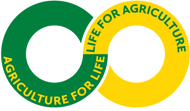Published in Scientific Papers. Series B, Horticulture, Vol. LXVIV, Issue 1
Written by Sergiu-Ayar ENE, Ionica DINA, Anamaria TĂNASE, Traian-Ștefan COSMA, Aurora RANCA, Răzvan-Ionuţ TEODORESCU
Pruning is a key practice in viticulture, influencing grapevine productivity, fruit quality, and plant health. As the climate evolves, adapting pruning strategies to optimize grape yield and quality becomes increasingly vital. This study was conducted in the grapevine fields of the Research Station for Viticulture and Oenology Murfatlar, Romania, on 'Muscat Hamburg’, a table grape cultivar. Three pruning variants were evaluated over a 3-year span (2022-2024): V1 (24 buds), V2 (32 buds), and a control (38 buds). The impact of these variants was assessed on parameters such as total shoots, fertile shoots, fertility percentage, cluster weight, weight of 100 berries, sugars, total acidity and pH. Climate data were analyzed and statistical analysis was performed to compare the variants. Results show that V1 outperformed V2 and the control in fertility percentage (72.9%), cluster weight (195 g), and weight of 100 berries (256 g). Additionally, the glucoacidimetric ratio was highest in V1 (70.1) compared to V2 and the control. And pH values (3.50) were similar across all variants. These findings indicate that pruning with 26 buds optimizes grapevine productivity and fruit quality.
[Read full article] [Citation]




